David Green examines New Zealand's role in the post-war Paris Peace Conference where the Treaty of Versailles was negotiated – its first appearance on the international stage in its own right.
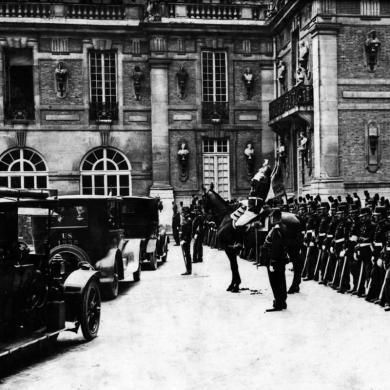
Delegates leaving the Palace of Versailles after signing the Treaty of Versailles. Archives New Zealand, AALZ 903 1/13
Britain’s dominions had had no say in the decision to go to war with the German Empire – and subsequently, the Austro-Hungarian and Ottoman Empires – in 1914. Canada, Newfoundland, South Africa, Australia and New Zealand were committed to the conflict by a decision of the British government, which retained responsibility for imperial foreign policy. Nor were the dominions involved in the behind-the-scenes negotiations in late 1918 which resulted in separate armistices (agreements to stop fighting) with each of the Central Powers.
But in the lead-up to the January 1919 conference in Paris that was to decide the peace terms imposed on Germany, Canadian prime minister Robert Borden and his Australian counterpart Billy Hughes insisted on separate dominion representation. Borden pointed out that, because of the USA’s late entry into the war, more Canadians than Americans had died on active service. Canada, Australia and South Africa were each allotted two delegates, but New Zealand only one. While this was justifiable on the basis of population and casualties, it meant that Liberal Party leader Joseph Ward – since 1915 effectively co-prime minister with Reform’s Bill Massey – would not be a delegate. With an election in the offing, Massey was anxious that Ward not leave Paris in a huff and seize the reins of power back home. In the event, Ward joined the British Empire delegation and was able to attend plenary sessions. Massey became a member of the conference’s Responsibility Commission, which investigated ‘war crimes and war guilt’.
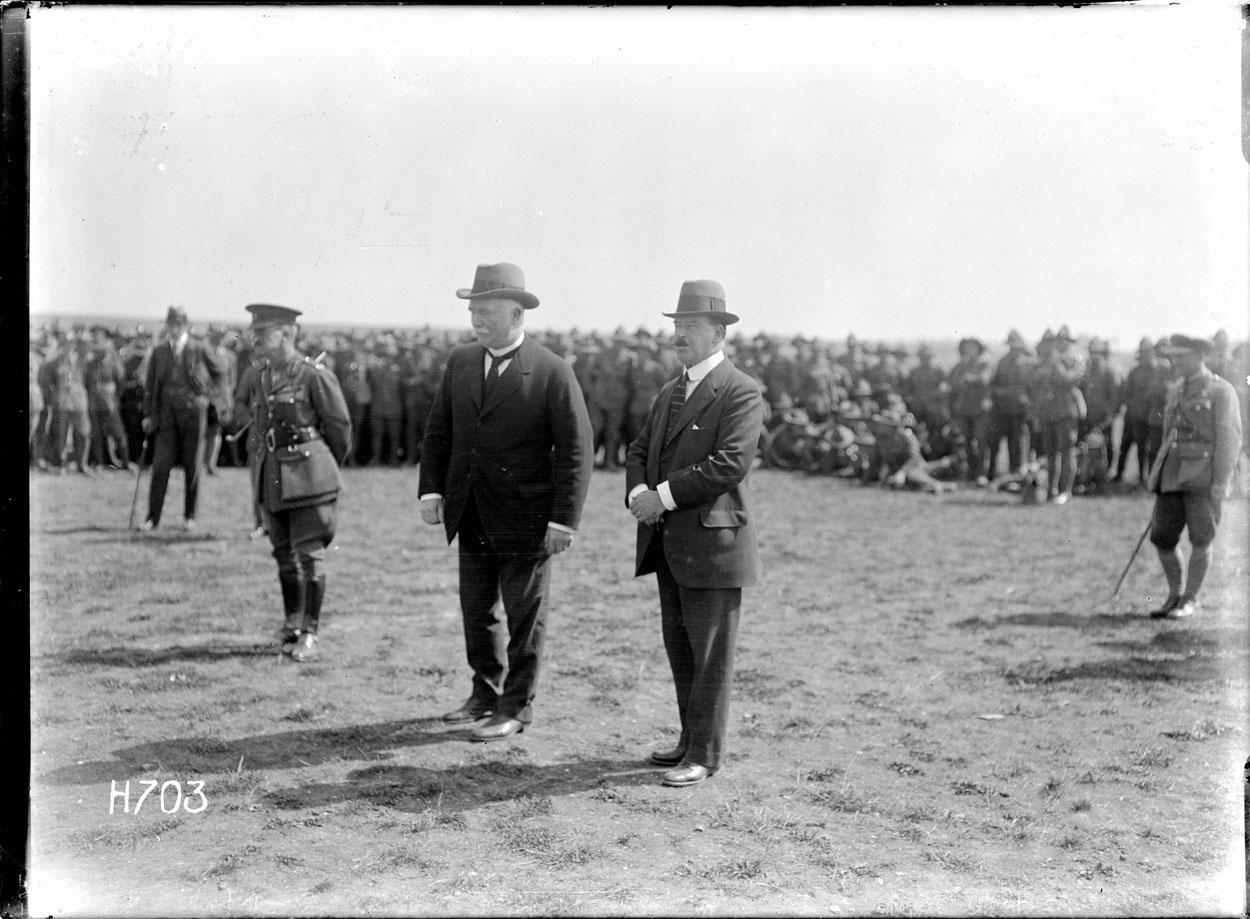
Prime Minister William Massey (centre left) and Sir Joseph Ward (centre right) visit New Zealand troops in the field, Bois-de-Warnimont, France in 1918. Royal New Zealand Returned and Services' Association: New Zealand official negatives, World War 1914-1918. Ref: 1/2-013307-G. Alexander Turnbull Library, Wellington, New Zealand.
Versailles was New Zealand’s first appearance on the international stage in its own right. Becoming a foundation member of the League of Nations created following the conference would confirm New Zealand’s effective independence within the British Empire. Idealistic US President Woodrow Wilson was the key advocate for the League, which would debate – and potentially make binding decisions on – the kinds of international disputes that had precipitated the war. For their part, the British delegates argued that the Empire had made a major contribution to the Allied victory and were reluctant to relinquish potential territorial gains to the new body. South Africa, Australia and New Zealand had each occupied nearby German colonies and were keen to retain these on behalf of the Empire. Wilson’s view was that such territories should be administered under mandates from the League of Nations until they were ready for independence.
The compromise reached was that ‘Class C’ mandates would be granted to South Africa for South-West Africa, Australia for New Guinea and New Zealand for Western Samoa. Administered as ‘integral portions’ of the territory of the mandate holders, these would be colonies in all but name. The mandate for Nauru went to Britain, which agreed to share the island’s agriculturally valuable phosphate resources with Australia and New Zealand. Little thought was given to the views of the people of the mandated territories. Colonel Robert Logan’s assurance that most Western Samoans supported New Zealand rule soon proved to be misguided, not least because of the 8500 deaths caused by his administration’s failure to quarantine the influenza-ridden island trader Talune when it docked in Apia in November 1918.
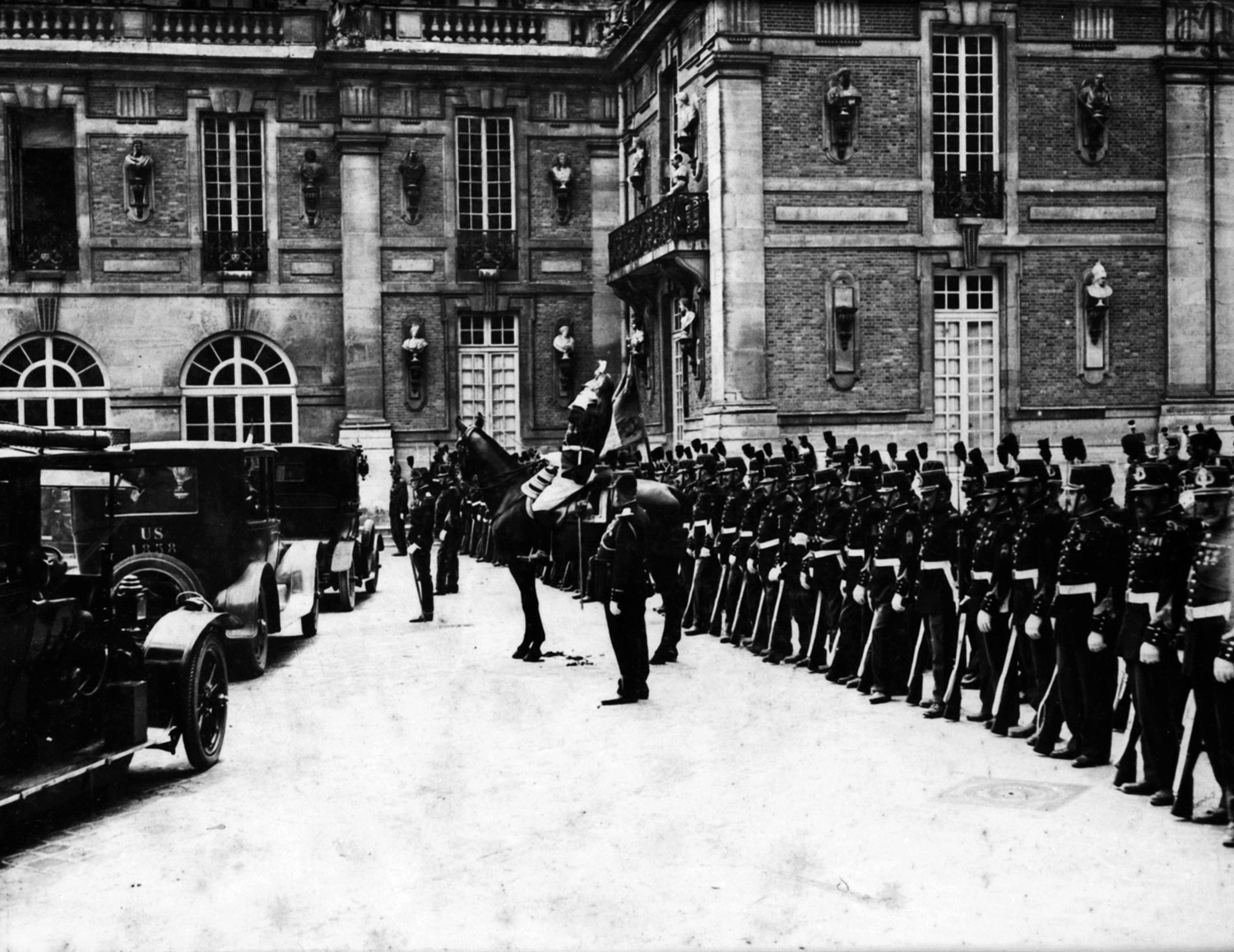
Delegates leaving the Palace after signing the Treaty of Versailles, 28 June 1919. Image courtesy of Archives New Zealand, reference: AALZ 903 1/13
Japan’s status as one of the five victorious powers raised awkward issues for New Zealand and Australia, which saw themselves as outposts of European civilisation potentially threatened by what many at the time described as 'Asiatic hordes.' A ‘White Australia’ was openly avowed by Hughes’ Nationalist Party government. Massey and Ward were less strident, but equally keen to keep out non-white migrants. Hughes insisted that all British Empire delegates oppose the inclusion of a Japanese-sponsored declaration of racial equality in the Covenant of the League of Nations. This threat to the dominions’ powers to restrict or ban non-European immigration was duly deleted from the draft Covenant. Neither dominion was happy that Japan was awarded mandates over former German colonies north of the Equator. But given their own acquisitions in the South Pacific, they had no credible basis for objecting.
The determination of Massey and the European Allies that the deposed German Kaiser Wilhelm II and other alleged war criminals be tried in criminal courts or by an international tribunal was opposed by the United States and Japan. The Kaiser was never brought to trial under the subsequent compromise agreement.
The Allies agreed on the peace terms in early May, but Massey and Ward had to cool their heels in Paris for another two months while Germany envoys quibbled. Not until 28 June – the fifth anniversary of the assassination of the Austrian Archduke Franz Ferdinand that sparked the war – was Massey able to put pen to paper on the Treaty of Versailles, on which his was the 17th signature. The amount Germany owed the Allies in reparations was yet to be settled. Massey hoped that New Zealand would receive £10 million over 30 years to partially offset the cost of pensions for disabled soldiers and the families of those killed. In this, as in much else about what he came to regard as a ‘soft’ peace, he was to be disappointed.
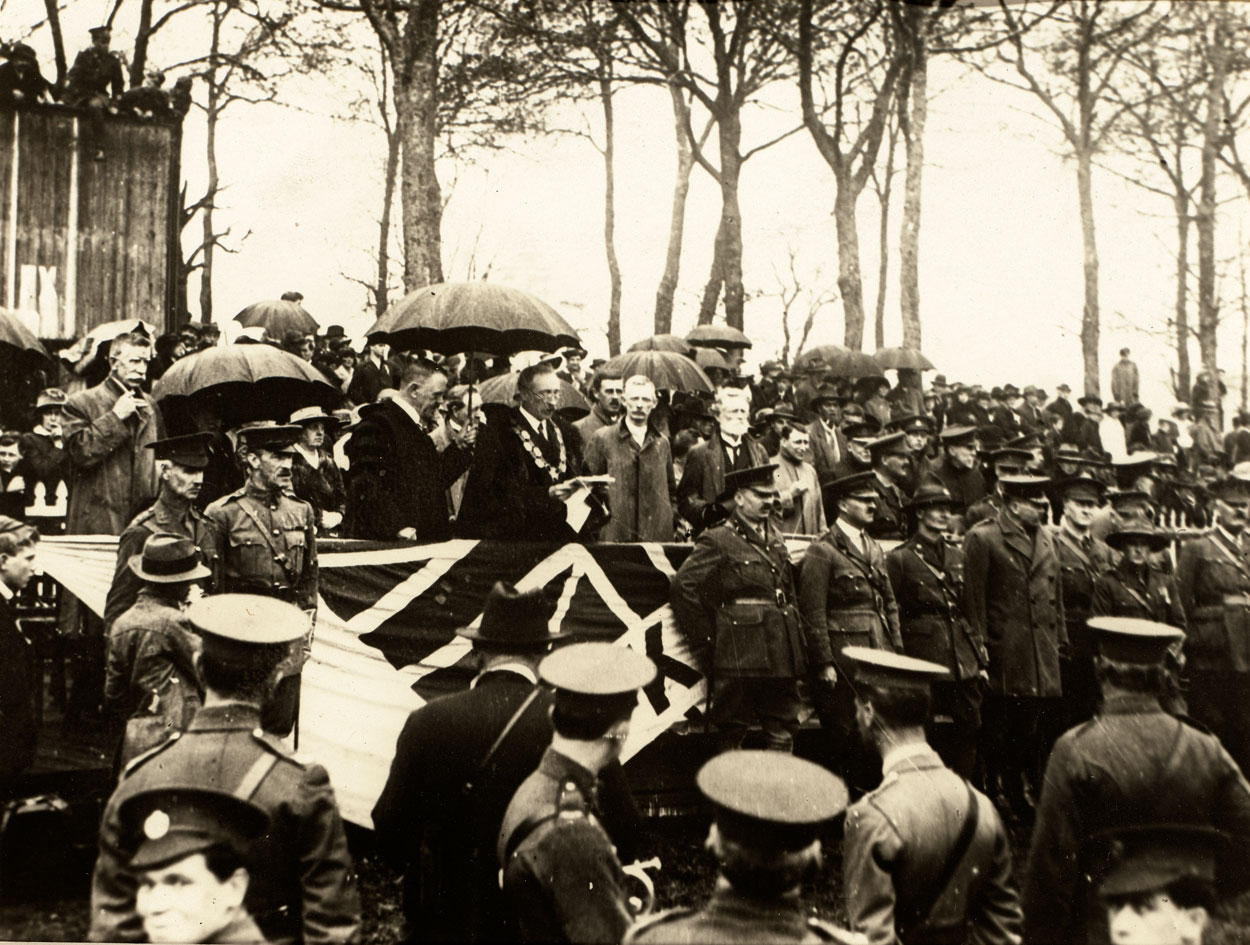
Auckland's Deputy Mayor A J Entrican reading the proclamation of the signing of the Treaty of Versailles in the Auckland Domain, 1919. Image courtesy of Auckland Libraries Heritage Collections, 5-1276.
New Zealand did receive £500,000 to cover the costs of its participation in the occupation of Germany in early 1919. In addition, German artillery pieces captured at the end of the war were shipped home and distributed around the country as trophies. Most have not survived, but a Krupp heavy gun still stands on Battery Point, Kelburn, overlooking Wellington Harbour, and a smaller German field gun sits next to the Arawa war memorial in Rotorua.
By the time the 1921 Imperial Conference allocated New Zealand 1.75 per cent of German reparations received by the Empire, Britain’s will to enforce payment was waning. When in 1923 France occupied the Ruhr valley – Germany’s industrial heartland – in a bid to strong-arm the Weimar Republic into paying up, Massey conceded: ‘I do not think any dominion of the Empire, or Britain herself, would care to send an army into Germany for the purpose of enforcing what is due’. Only a fraction of the US$33 billion assessed by an Allied commission in 1921 was ever paid, and much of this was received in kind rather than as hard currency. The amount New Zealand eventually received is unclear.
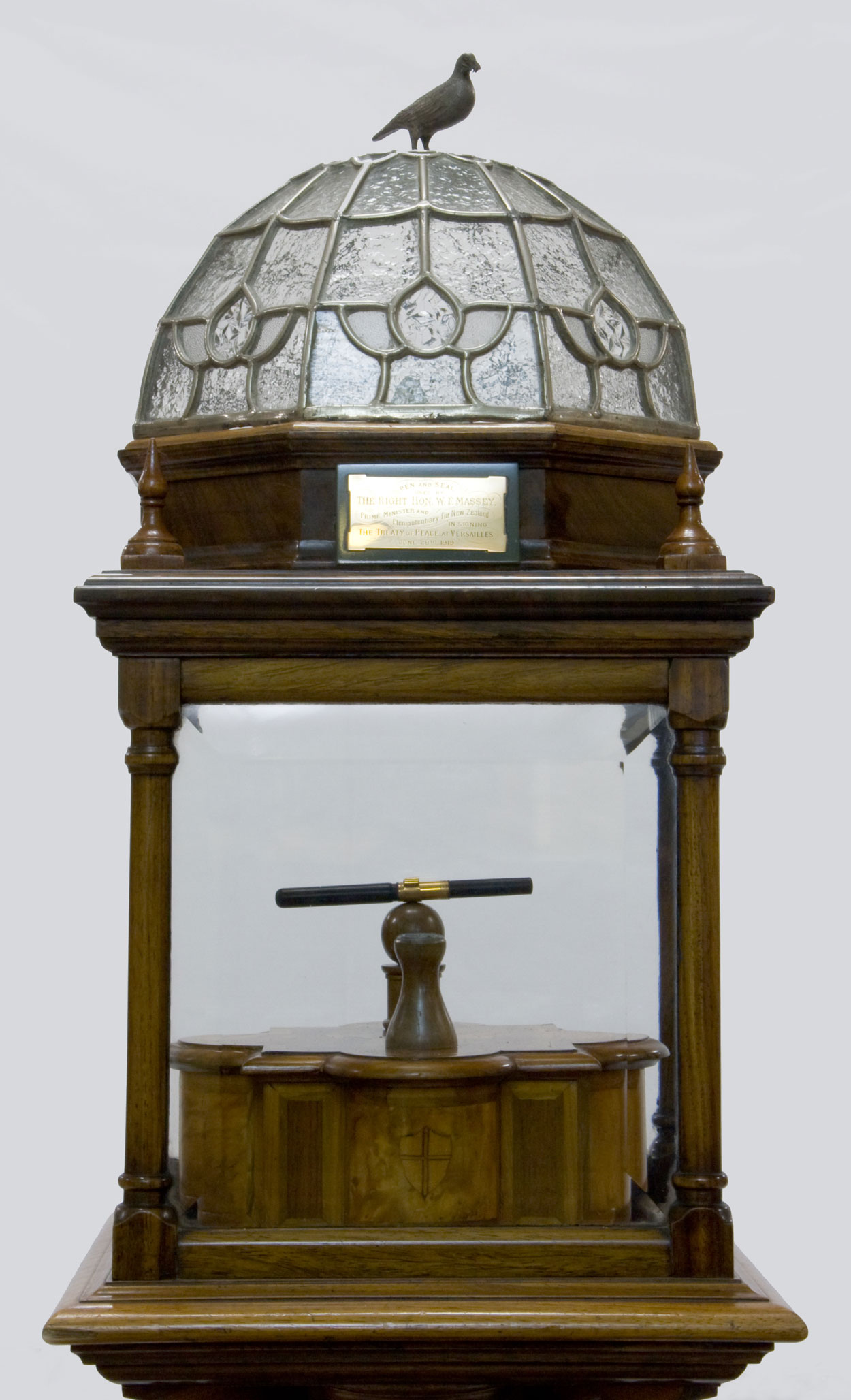
The pen and seal Prime Minister Sir William Massey used to sign the Treaty of Versailles on behalf on New Zealand now reside in a case at parliament. Image courtesy of Parliamentary Service.